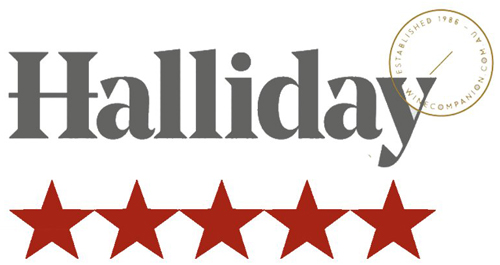Media Comments:
The Adelaide Advertiser – Wine
“Macclesfield is keen to earn a reputation as a distinct and exciting part of the Adelaide Hills.”
John Struik likes to claim that Australia’s first export wines came out of Macclesfield. Surely not. ‘‘I am not arguing the point,’’ he says, magnanimously, ‘‘but I could, because in 1846 (Sir Samuel) Davenport exported eight or nine puncheons of fortified wine from his Macclesfield vineyards to the court of Queen Victoria.’’
Macclesfield is about the last place to get a mention as a conventional wine region. It has been classic grazing country for dairy, sheep and beef cattle or so it seems.
The vineyards are nestled high on the southeastern slopes of the Adelaide Hills on the Angas River.
The Two Dogs Lemonade baron, Duncan McGillivray, was the first grapegrower with his Longview Vineyards in 1995, but he has been followed by Struik and his Bendbrook Vineyard, Pindari Vineyard and Springhill vineyard. In all, there are about 200ha under vine. Now that there is a set of vintages from the area, it has become a distinct subregion of the Adelaide Hills.
Struik opens Bendbrook reds and whites mainly from the 2004 vintage and the differences seem clear, as they often do if you are having a long and pleasant lunch. His Goat Track shiraz, for example, has berry upper notes of the better Adelaide Hills shirazes, but there is a deal more body and an elegant, almost opalescent finish.
The Section 19 cabernet sauvignon is soft and makes you think of the South- East cabernets rather than greener Adelaide Hills varieties, while the sauvignon blanc is more relaxed than the Adelaide Hills norm. The Rhine-style riesling is slender, with a whack of lemony scent to it.
This poses the question that South Australia’s burgeoning wine districts are constantly asking: Are the wine region classifications too wide?
Struik believes Macclesfield could stand examination as a separately identified subregion and he is setting out to convince his neighbouring vineyards to join the push.
‘‘Our wines are distinctively different,’’ says Struik. ‘‘We are slightly warmer. We don’t have the colder nights.’’ He is not so convinced by the whites, but he sees the reds of Macclesfield as being a world apart from the rest of the Adelaide Hills.
He says the area escapes the frosts because it slopes away to the plains and is cooled by what the locals call the ‘‘Coorong Docker’’ blowing up the valleys off the Southern Ocean.
The annual rainfall is approx 750mm. The soils are full of ironstone and slate over ancient Pre-Cambrian bedrock. He says the reds, particularly cabernet sauvignon, do not have the green character of many Hills vineyards, and a limy and flinty character shows up in the whites.
Struik says Davenport first planted grapes at Macclesfield in 1841. But vines were pulled out at the outbreak of World War I in favour of dairy farming. Today, you can find shiraz, cabernet sauvignon, sauvignon blanc, chardonnay, riesling, viognier, semillon, nebbiolo, zinfandel, merlot and pinot noir.
Tomorrow, SA might be famous for its Macclesfield wines.”


